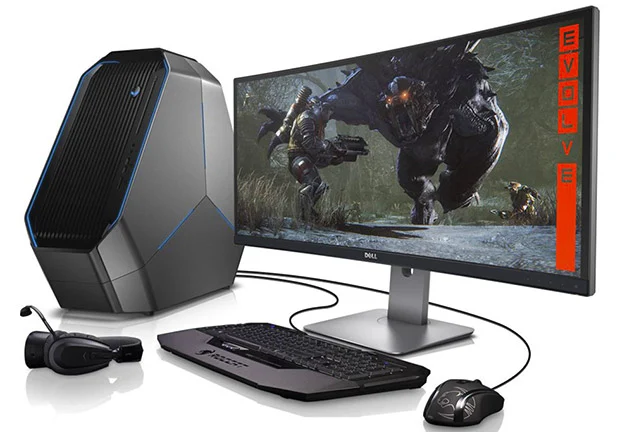Can You Make Fidgets With a 3D Printer?

3D printing technology makes it possible to create custom and unique fidgets, providing a fun and creative outlet for anyone looking to relieve stress, anxiety, or boredom. Fidgets are small handheld objects designed to be manipulated, spun, or played with to relieve stress, anxiety, or boredom. They are typically made using a 3D printer, and you can use materials like plastic, metal, or wood to print them.
With a 3D printer, you can create unique and personalized fidgets with a wide range of shapes, sizes, and designs. From simple spinning disks to complex interlocking gears, the possibilities are endless. You can also experiment with different colors, patterns, and textures to create truly one-of-a-kind objects.
To make fidgets with a 3D printer, you will need access to a 3D printer and design software to create the files for printing. Various free and paid 3D modeling software options, such as SelfCAD, provide powerful tools and intuitive interfaces to help you bring your ideas to life.
At the height of their popularity, fidget spinners and other types of fidget toys swept over the globe, and even now, people still seek them out and see them very often. It’s not hard to see why; there’s simply something enjoyable about doing something mindlessly that needs very little work or even thinking yet still manages to provide a sense of fulfillment. The fact that you can manufacture your fidget toys and spinners using a 3D printer adds to the sense of accomplishment you feel from using them. Sometimes, they are well-known fidget spinners, and other times, they are novel takes on little desk decorations that you can play with whenever you have a spare hand.
In this article, we list a few things you must know before you take on the challenging task of printing a fidget toy. Let’s start with the printer specifications required to make fidgets.
Printer Requirements to 3D Print Fidgets
Most 3D printers can print fidgets, but there are some specifications you should keep in mind to ensure the best possible results. Here are some factors to consider:
- Build Volume
Make sure your 3D printer has a build volume that is large enough to accommodate the size of your fidget design. Most desktop 3D printers have a build volume of around 200mm x 200mm x 200mm, which should be sufficient for most fidget designs.
- Resolution
The resolution of your 3D printer affects the level of detail you achieve in your fidget design. Higher-resolution 3D printers will produce smoother and more accurate prints, but they are also generally more expensive.
- Filament Compatibility
Different 3D printers can use different types of filaments. Some 3D printers, for example, are designed specifically for using PLA filament, while others can use a wide range of materials. Consider the type of filament you would like to use to make your fidget, and choose a 3D printer that is compatible with that material.
- Reliability
Make sure your 3D printer is reliable and consistent. If your 3D printer is prone to jams, misalignments, or other issues, it can be difficult to achieve the quality and accuracy you need for printing fidgets.
- Ease of Use
Consider the ease of use of your 3D printer. Some 3D printers are more user-friendly than others. If you are new to 3D printing, look for a 3D printer that is easy to set up and use and comes with comprehensive user documentation.
When choosing a 3D printer for printing fidgets, consider your needs, budget, and skill level. A good starting point is to research popular and highly rated 3D printers in your budget range and read reviews from other users to get an idea of their experiences.
Steps to 3D Print Fidgets
The steps to 3D print a fidget are as follows:
- Choose a design
Before you start 3D printing a fidget, it is essential to choose a design that you like. Hundreds of fidget designs are available online, and you can easily find one that meets your needs. Some popular websites for finding 3D printable files include Thingiverse, MyMiniFactory, and Cults3D. These sites offer a large selection of designs to download and print at home. If you want to create your own design, you can use 3D software such as SelfCAD.
- Prepare your 3D printer
Once you have your design, you need to make sure your 3D printer is ready to go. It includes calibrating your 3D printer, loading the filament, and ensuring the bed is level. Calibration is important to ensure that your 3D printer works correctly and that your prints come out as intended. When loading filament, use a clear filament appropriate for your fidget design. The clear filament is a great choice for fidgets because it allows you to see the internal mechanics of your fidget as it moves.
- Import the design into the 3D printer software
After preparing your 3D printer, you need to import the design into the software you will use to control your 3D printer. You can use the file import feature in your 3D printer software. In SelfCAD, for example, you can import .stl or .obj files. Once the design is imported, you can preview it in the software to ensure it looks how you want.
- Set up your print parameters
Before printing, choose the right print settings for your fidget. This includes selecting the print speed, layer height, infill percentage, and more. The print speed will determine how fast your fidget is printed. Layer height affects the surface finish of your print. A lower layer height will result in a smoother surface. Infill percentage determines how much of the interior of your fidget will be filled with material. Experimenting with different settings will help you find the best combination for your fidget design.
- Start printing
Once you have set up your print parameters, you can start printing your fidget. It typically takes a few minutes to several hours, depending on the size and complexity of your fidget design. Monitoring your print while in progress is vital to ensure everything goes smoothly. If you notice any problems, you can pause the printing and make adjustments as needed.
- Post-processing
After the printing is complete, you will need to do some post-processing to finish your fidget. It may include removing supports, sanding rough edges, and applying a finish if desired. Supports are structures used during the printing process to help maintain the shape of your fidget. Removing these supports can be done with pliers or a cutting tool, and you must remove them carefully to avoid damaging your fidget. Sanding rough edges will give your fidget a smoother finish, and applying a finish can enhance the look of your fidget and protect it from wear and tear.
- Enjoy your fidget
Once your fidget is complete, you can enjoy using it! Fidgets are great for relieving stress, promoting relaxation, and improving focus. Whether at work, school, or home, your 3D-printed fidget will be a great addition to your daily life.
Precautions to keep in mind
Now that you know the steps to print a fidget at home, there are several precautions you should keep in mind when doing so.
- Safety
3D printing involves heating plastics, which can release fumes that can be harmful if inhaled. Make sure your workspace is well-ventilated, and wear a mask if necessary. Additionally, the hot-end and build platform of your 3D printer can get very hot, so be careful not to touch them during or after printing.
- Print Settings
Different 3D printing filaments have dissimilar properties, and your choice of filament will affect the strength and durability of your fidget. Consider using a material like ABS or PETG, known for its strength and flexibility. Additionally, pay attention to your 3D printer’s print settings, including the temperature, layer height, and infill.
- Design
When designing your fidget, consider the stress it will be subjected to. For example, if your fidget is frequently spun or flipped, you should ensure that it is well-balanced and has enough structural support. Additionally, you may want to include features like textures or bumps to make it easier to hold and play with.
Remember to be patient and take your time when printing and post-processing your fidget. The result will be worth it!
Design and Print Custom Fidgets
3D printing technology has opened up a world of possibilities for making custom fidgets. With a 3D printer and design software you have the tools to bring your creative ideas to life and create a personalized fidget that meets your specific needs. Whether you’re looking to relieve stress and anxiety, a 3D-printed fidget is a fun and engaging way to do so.
With the flexibility of 3D printing technology, you can easily adjust your design, try out new ideas, and keep creating until you have the perfect fidget. The ability to customize your fidget to your exact specifications means that you can have a fidget tailored to your individual needs and preferences. So, if you’re looking for a new hobby or a unique way to express your creativity, why not try making your 3D-printed fidget today and experience the satisfaction of creating something with your own hands?
Keep an eye out for our next blog post, where we’ll be sharing more on Buzz!






